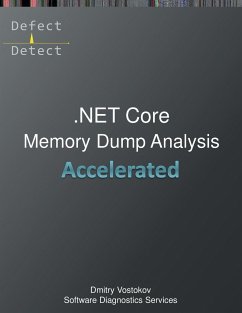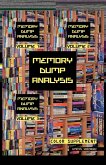The full-color transcript of Software Diagnostics Services training with 9 step-by-step exercises, notes, and source code of specially created modeling applications. The course covers 19 .NET memory dump analysis patterns plus additional 19 unmanaged patterns. Learn how to analyze .NET Core 5/6 application and service crashes and freezes, navigate through memory dump space (managed and unmanaged code) and diagnose corruption, leaks, CPU spikes, blocked threads, deadlocks, wait chains, resource contention, and much more. The training consists of practical step-by-step exercises using Microsoft WinDbg debugger to diagnose patterns in 64-bit process memory dumps. The training uses a unique and innovative pattern-oriented analysis approach to speed up the learning curve. The book is based on the previous fourth edition of Accelerated .NET Memory Dump Analysis that covered .NET Core 5 and Windows 10. It is updated for the latest WinDbg from Windows 11 SDK and has a new .NET Core 6 exercise with a memory dump from Windows 11. This edition also includes a possibility to use a Docker WinDbg image with required symbol files instead of a local Debugging Tools for Windows installation. Prerequisites: Basic .NET programming and debugging. Audience: Software technical support and escalation engineers, system administrators, DevOps, performance and reliability engineers, software developers, and quality assurance engineers. The book may also interest security researchers, reverse engineers, malware and memory forensics analysts.
Hinweis: Dieser Artikel kann nur an eine deutsche Lieferadresse ausgeliefert werden.
Hinweis: Dieser Artikel kann nur an eine deutsche Lieferadresse ausgeliefert werden.








